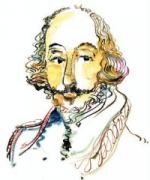|
This section contains 9,763 words (approx. 33 pages at 300 words per page) |

|
SOURCE: “Moral Play Components in Shakespeare's Scenes,” in Shakespeare and the Late Moral Plays, University of Nebraska Press, 1986, pp. 134-60.
In the following excerpt, Dessen discusses Shakespeare's adaptation of allegorical figures to his “late moral plays,” particularly regarding Richard III, Antony and Cleopatra, and Troilus and Cressida.
Close attention to the final movements of All's Well, Richard III, and 2 Henry IV demonstrates how a horizon of expectations linked to the late moral play figures … can shed light on problematic moments. Rather than pursuing other distant cousins of the public Vice and the two phased action (e.g., Pistol in Henry V, Lucio in Measure for Measure, Autolycus in The Winter's Tale), let me turn now to other features of the moral plays also of interest to interpreters of Shakespeare. First, in general terms, the moral drama provides an obvious example of how theme or thesis can take precedence...
|
This section contains 9,763 words (approx. 33 pages at 300 words per page) |

|


